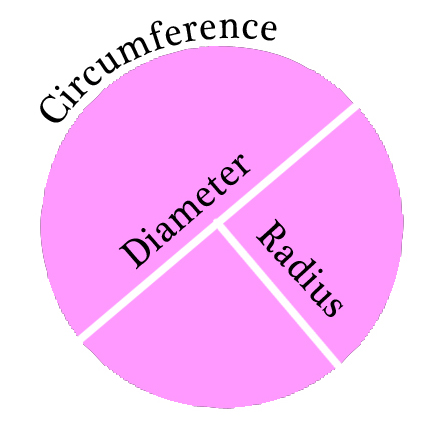Here in the heart of the tech world, we see things a bit differently. It’s clear to us that math and science are part of our daily lives. Since sewing‘s core is the manipulation of shapes, it’s clear that our sewing benefits from being familiar with some basic geometry.
There are a few math equations that will really boost your successes in sewing. The first is finding the circumference of a circle. Why do I need to know how to find the circumference of a circle, you may ask? Well, if you ever need to know how much trim to buy for the hem of a circle skirt, or table cloth, you will need this equation. Yes, you can try to measure it with a tape measure, but not only will you likely not get a good measurement due to the woodgy nature of fabric and tape measure. It also implies that you have to go to the fabric store twice, because you can’t get your trim until you finish the project. That’s a wasted trip.
Keep this little equation in your head, or in your pocket, or in your smart phone and life will be much easier at the fabric shop.
C=2πR, or Circumference = 2 x radius x 3.1415.
You will already know the radius of your circle, because that will be the drop plus the radius of the table, and you needed that information to get your fabric. If it’s for a circle skirt, you need to know the drop, plus about 12 inches (for the depth of your waist).
I can’t even begin to count the number of times that I wowed a fabric store customer back in the day with this little tidbit from my high school geometry days. It’s amazing how many have forgotten it, or don’t remember that is has relevance to their lives now. They may have even exasperatedly sighed “WHEN will I ever use this?” during class. Well, now we all can send notes to our high school math teachers, thanking them for helping us with our sewing. Let them figure out why!


Can you explain what “the Drop” means? Is is from waist to hem length? Completely still confused as to how to figure this out. I am padding a dress form and was wondering how I calculate how thick the padding should be from a 24” to a 34” waist.
Hi Jacquie,
You are overthinking this. You don’t need the circumference of a circle to pad out your dress form. Although your waist is not a circle, you already have that information: your waist measurement. Padding out a dress form is a much more hands-on activity. All you need to do for your dress form is to just add your quilt batting until the waist of your form matches your own waist. Then you cover the form with muslin, or nowadays you can get a dress form cover on line, which is a lot like a giant sock. The formula here is only for circle circumference–the length of trim you will need to buy to have enough to make it all the way around the skirt or table cloth. For future reference, yes, the drop is from your waist (or table edge) to the hem. for a 10″ difference, I would suggest making a sloper (a simple bodice, with attached pencil skirt fitted to you and your exact measurements). Put a drawstring at the hem. Loosely pad out your dress form, and put the sloper on the dress form. Add more padding where necessary. Sew the center back seam shut. Then pull the drawstring tight to snug up the fabric and remove any wrinkles. Voila! A dress form that fits your perfectly.